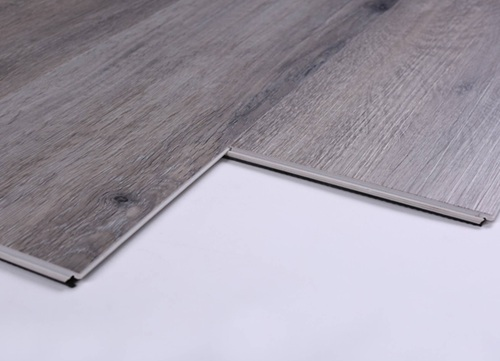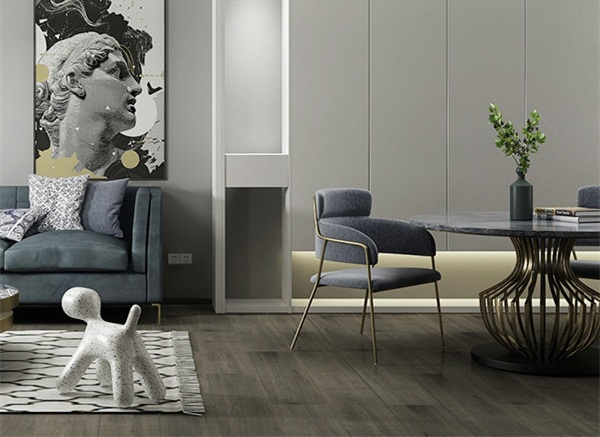SPC flooring (stone-plastic composite flooring) and vinyl flooring both belong to the category of PVC-based elastic flooring, sharing advantages such as water resistance and ease of maintenance. However, they differ significantly in terms of composition, performance, and suitable applications.
Core Composition

SPC Flooring: Four-layer structure (PVC wear-resistant layer + 3D high-definition decorative layer + limestone powder + PVC core layer + soundproof moisture-proof layer), featuring a “stone-plastic composite” texture that is hard and non-elastic, with high simulation of wood/stone patterns.
Vinyl Flooring: Primarily a three-layer structure (thin wear-resistant layer + flat decorative layer + PVC base layer), some contain plasticizers, with a soft, flexible texture and relatively limited realism.
Key Performance Characteristics
Durability: SPC flooring has a wear resistance rating of AC4 or higher, resistant to scratches and indentations, suitable for high-traffic areas such as living rooms and retail spaces; vinyl flooring is mostly AC3 grade, prone to indentations from sharp objects, and only suitable for low-traffic areas like bedrooms and study rooms.
Waterproofing: SPC flooring is 100% waterproof and can be used in kitchens, bathrooms, and basements; vinyl flooring is waterproof but seams may leak water, and prolonged immersion may cause warping, making it more suitable for dry areas.
Foot Feel: SPC flooring is relatively hard and cool, requiring a carpet in winter without underfloor heating; vinyl flooring is soft and elastic, providing a warm foot feel and reducing fatigue from prolonged standing, making it suitable for households with elderly members or children.
Installation: SPC flooring uses a lock-and-fold system that requires no adhesive and is easy to install DIY-style, but it has high requirements for floor flatness (error ≤2mm/2m); vinyl flooring can be installed using adhesive (requires professional installation and poses VOC risks) or locking mechanisms, with lower requirements for floor flatness (tolerance ≤3mm/2m).
Application Scenarios and Selection
Application Scenarios
Choose SPC flooring: humid areas, high-traffic zones, households with pets/children, and spaces seeking high-fidelity texture.
Choose vinyl flooring: low-traffic areas, children's rooms, older homes with uneven floors, and households with limited budgets.
Purchasing Tips
Vinyl flooring: Choose products labeled “phthalate-free” and “E0-grade environmentally friendly,” prioritize click-lock systems, and avoid phthalate and VOC overexposure.
SPC Flooring: Focus on core layer density (higher limestone powder content indicates greater durability) and locking mechanism quality (seamless and resistant to separation after installation).
Common Requirements: SPC flooring wear layer ≥0.5mm, vinyl flooring ≥0.3mm. Both require third-party testing reports; reject “three-no products” (no brand, no manufacturer, no quality certification).
SPC flooring is durable, waterproof, and highly realistic, but it has a harder feel underfoot and a higher budget; vinyl flooring offers a comfortable feel underfoot and high cost-effectiveness, suitable for special floor conditions or limited budgets. When selecting, consider the space's function, user demographics, and renovation budget; testing samples is recommended when necessary.
If you want to learn more about SPC flooring or purchase SPC flooring, please contact info@gkbmgroup.com.
Post time: Aug-19-2025





